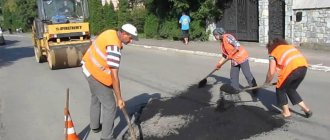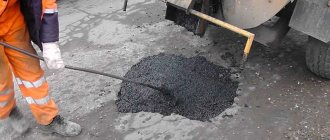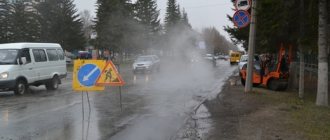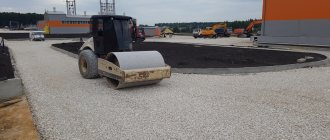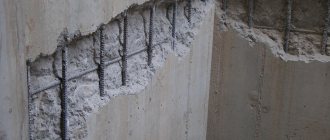Smooth, high-quality road surfaces that provide full adhesion of vehicle wheels to the road surface are the key to safe and quiet road traffic. Due to active use, roads are constantly in need of repair and renewal.
Currently, the most popular type of road surface repair is pothole repair. This method is used more often than others, because it is much more profitable, economical and faster. However, there are many complaints about it from car drivers who swear about the quality of road surfaces and the rapid destruction of patches after repairs. But here the reason may not lie in the technology itself, but in those who use it. The quality of such repairs depends on compliance with the pothole repair technology. Quite often, careless workers do not even pay attention to the conditions and requirements that must be observed in the process of road repairs, so unscrupulous and careless attitude towards work often becomes the cause of destruction of road surfaces.
Advantages
Road pothole repair does not imply any work to restore communications or improve areas: asphalt is laid only in areas that need urgent repairs. In addition, it should be noted that such work must be carried out in strict compliance with all points of the technological process. This guarantees cost savings, long service life and maximum quality. Pothole repair allows you to restore the continuity, strength, evenness, adhesion and water resistance of coatings. In addition, it ensures the standard service life of the sections.
Pothole repair has been relevant for decades. There are dozens of technologies for carrying out such repairs of road surfaces, and the optimal method is selected based on weather conditions, the condition of the road surface, the possibilities of full use of special equipment and the specifics of the materials used. Pothole repair of road surfaces has several undeniable advantages:
- there is no need to completely block traffic on the motorway/highway;
- prompt completion of all necessary work (small areas are restored within 24 hours);
- no need to use heavy special equipment;
- Pothole repair of asphalt pavement does not require huge financial costs (compared to major repairs).
Main characteristics of the finished cast coating
Experts value cast asphalt for several important qualities, among which durability and the ability to withstand heavy loads come first. The cast surface has excellent water resistance due to the small number of pores in the coating structure and can easily withstand temperature drops to significant values. High corrosion resistance makes the coating insensitive to various salts.
The monolithic cast road surface, laid at high temperatures, has a high degree of adhesion with the lower layers, literally sinteres with them and provides increased water resistance of the road structure, which is especially valuable in areas with moving and complex soils.
Asphalt rolling
Many domestic enterprises that carry out road repairs and construction have rollers weighing from 8 tons. Such road equipment is justified for full-scale work, but it is not practical to use it for pothole repair. To compact several tens of meters of road, it is better to use the “trampling” method, which is implemented using manual vibrating plates. Asphalt patching is also carried out using small sidewalk or vibrating rollers.
Traditional method
With this repair method, the damaged area is first separated from the coating, this is done using a road milling machine. Then the edges of the potholes are cut off to give them a rectangular shape. Then the defective sector is cleaned from dust and crumbs; its edges and bottom are treated with liquid bitumen emulsion or heated bitumen, after which the asphalt concrete mixture is poured.
Pothole repair of road surfaces, the technology of which is traditional, allows you to obtain high-quality work results, but it requires a significant number of operations. It is used in the process of repairing various types of coatings made of bitumen-mineral and asphalt concrete materials.
Repair with heating of coatings and reuse of its material
This type of road pothole repair is based on the use of special equipment for heating the surfaces - an asphalt heater. This method allows you to obtain high-quality results, save on materials, and simplify the technology of performing work. But at the same time, pothole repair of asphalt concrete pavement has significant limitations due to weather conditions (air temperature and wind). This method is used in the process of repairing various types of coatings made from bitumen-mineral and asphalt concrete mixtures.
What causes potholes on the road?
The condition of the road surface is influenced by various factors. The main reasons for the appearance of pits include:
- Increasing load on the road: increasing traffic intensity, exceeding the norm for a particular road surface. As a result, cracks appear and grow, leading to the appearance of pits.
- Proximity of groundwater, formation of sinkholes.
- Destruction as a result of floods and heavy rains.
- Exposure to aggressive reagents.
- Violations during laying of asphalt concrete mixture, non-compliance with technology.
Repair without cutting down or heating the old coating
Destructions and deformations of road surfaces are filled with cold polymer-asphalt concrete mixture, wet organomineral mixture, cold asphalt concrete, etc. The method allows work to be carried out in cold weather with wet and damp surfaces, is simple to implement, but is not capable of ensuring high quality and durability of coatings. This method is used in the process of repairing road surfaces with low traffic intensity, temporary, and also as an emergency measure on roads with increased intensity.
Is it possible to put asphalt chips on the ground? How to lay asphalt chips
The technological process involves the preliminary creation of a base of sand and crushed stone. In cases where the construction budget is limited and the traffic intensity is low, it is possible to lay the material directly on the ground, without creating additional layers.
Work algorithm:
- Uprooting all vegetation, clearing the soil of rhizomes.
- Leveling the territory.
- Covering the soil with a bitumen mixture.
- Laying the required number of cubes of asphalt chips manually and then leveling the surface.
In order for construction work to be carried out on time and without delays, it is necessary to correctly calculate the required volume of building materials. To estimate the required amount of asphalt, you should find out how much a cube of asphalt chips from your chosen manufacturer weighs. For approximate calculations, you can use the following figures: 1 cubic meter of asphalt crumbs - 1.5-1.9 tons.
Cold methods of pothole repair
This is a pothole repair of the road surface, the technology of which is based on the use of cold asphalt concrete or bitumen-mineral mixtures as a repair material. These methods are used mainly in the process of repairing cold asphalt concrete and black crushed stone on low-category roads and when it is necessary to temporarily or urgently repair potholes.
Work begins in the spring at an air temperature of at least +10 degrees. At the repair site, the coating is formed under the influence of moving transport for 20-40 days, and its quality depends on the properties of the bitumen emulsion or liquid bitumen, mineral powder, composition and intensity of traffic, and weather.
Repairs can also be carried out at low temperatures, and repair materials are prepared in advance. The cost of repairs using this technology is less than with the hot method. The main disadvantage is the short service life of coatings on roads with traffic of buses and heavy trucks.
Cast asphalt concrete mixture (ABS) and semi-finished briquettes
Perfect for large-scale pothole repairs in winter. They are prepared right before use or created in advance and then stored as semi-finished briquettes. To produce ABS, a certain amount of bitumen is heated in a boiler, sand, crushed stone and mineral powder are added to it in portions. Over the course of several hours, the contents are mixed and brought to +230 C°. Delivered to the desired location in a thermal bunker.
Briquettes do not contain mineral powder; they are prepared in the fall using molds. After complete hardening, they are packaged in polyethylene and stored in a cool room. As needed, heat in small batches in a thermal hopper.
Advantages of cast ABS:
- does not require compaction, and acquires all the necessary qualities during the cooling process;
- ideal adhesion to the asphalt surface under the most unfavorable conditions;
- high plasticity threshold;
- simplicity of the filling process;
- possibility of emergency recovery in both heat and cold.
The main disadvantages are the use of special equipment that maintains temperature readings during delivery. In zhaou, the performance characteristics of the canvas deteriorate, it softens and causes subsidence.
Hot ways
They are based on the use of hot asphalt concrete mixtures as materials: cast asphalt concrete, coarse and fine grained, sand, etc.
The methods are used when repairing roads with asphalt concrete surfaces. It is possible to perform work at air temperatures of at least +10 degrees with a dry coating and a thawed base. When using a heater, repairs are allowed at a temperature of at least +5 degrees.
Hot methods provide higher quality and longer service life of coatings.
Production of asphalt crumbs
Crushed asphalt is a recycled product made from used asphalt pavement. There are 2 technologies for making crumbs:
1. Production using cutter:
- old asphalt is cut off layer by layer;
- the resulting layers are crushed into small particles of a small fraction;
- To increase the density of the raw material, a bitumen mixture or other impregnations are added.
The crumbs obtained by this method are of excellent quality and are recommended for use immediately after production. Long-term storage can lead to a decrease in its quality.
2. Production by crushing:
- the old asphalt surface is removed and delivered to the recycling site;
- Asphalt fragments are placed in crushing plants until they are completely crushed.
The crushing method allows you to obtain crumbs of a large fraction, which is characterized by low cost. The quality parameters are lower than those of the material obtained using a milling cutter.
Regardless of the production method, asphalt crumbs are characterized by the following properties:
- resistance to moisture and temperature changes;
- long period of operation;
- increased density;
- resistance to erosion;
- low price compared to building materials of similar quality.
Preparatory operations
Before carrying out work, the following preparatory operations are performed:
- Site fencing, road signs and lighting devices are installed when work is carried out in the dark.
- Repair locations (maps) are marked using chalk or a stretched cord. The repair map is drawn with straight lines perpendicular and parallel to the axis of the road, giving the correct shape to the contour and capturing the undamaged surface.
- Damaged coatings are cut down, broken or milled, and the removed material is removed. It is carried out to the thickness of the destroyed coating layer, but not less than 4 centimeters along the entire length of the repair. When a pothole affects the bottom layer, it is loosened and removed to its full thickness.
- Potholes are cleared of material residues, dirt and dust.
- The walls and bottom are dried when performing repairs using the hot method.
- The walls and bottom are treated with bitumen or bitumen emulsion.
During the operation of paved roads, after a certain period of operation, they begin to fail due to a number of reasons:
- Influence of weather and climatic factors;
- Intense load from moving vehicles;
- Natural aging and wear;
- Violations of construction technology;
- Use of materials of inadequate quality;
- Failure to timely perform preventive road maintenance.
Standards
All types of repair work, including patching of asphalt pavement, are regulated in sufficient detail by GOST and SNiP. The main standards are:
- national standard 50597. The text of this GOST R was approved by the State Standard of the Russian Federation on October 11, 1993 by its resolution No. 221;
- “Methodological recommendations”, valid from March 17, 2004, adopted by Rosavtodor (see letter OS-28/1270-is);
- VSN 24-88. The Ministry of Road Transport of the Russian Federation approved the mentioned standards on June 29, 1988.
Technology options
Road patching is one of the types of routine repairs and is carried out using different technologies using various materials and special road equipment.
A specific technology is selected taking into account:
- the main tasks that need to be solved by performing the mentioned work: Ensuring high-quality elimination of the identified defect. The repaired area must meet in its basic parameters (strength, density, roughness and surface evenness) similar to the values inherent in the main coating;
- Significant increase in the service life of the treated area;
If there is a need for pothole repair, it can be performed using one of the above technologies.
- Hot pothole repair of coatings. The defective area is restored using hot mix asphalt concrete, the composition of which must be maximally adapted to the composition of the existing road surface. The method is the most common in Russia. Especially when repairing roads belonging to categories I – II.
- Cold repair technology. The use of cold repair mixtures based on bitumen makes it possible to restore the canvas to a lower quality (the strength is almost three times lower). But the quality of the repair performed depends less on the weather conditions under which it was carried out. Selected when performing work on roads of categories III and IV.
- Pothole repair technology using materials containing polymers. DRSU is used in exceptional cases (during urgent emergency repairs, when working on the surfaces of bridge structures, etc.).
Preparatory stage
Regardless of the chosen repair technology, the mentioned work begins with preparing the area with the identified defect in the road surface.
The algorithm is as follows:
- The surface of the damaged area and the adjacent road surface is cleaned of moisture, dirt and dust;
- The area where road patching is planned to be carried out is marked with straight lines (along and across the longitudinal axis of the road surface). In this case, the entire coating is captured by 50 mm on each side. If there are several areas nearby that need to be repaired, they are combined into one. The selected surface is called a repair map;
- For the entire depth of the damage, according to the applied markings, the old coating is selected using one of the available methods (cold milling, cutting, or notching). At the same time, it is controlled that the material is removed to the full thickness of the existing coating, and the walls are strictly vertical. The technology and sequence of operations according to which pothole repairs should be carried out are regulated in sufficient detail by GOST;
- Pieces of old coating, accumulated dirt, dust and accumulated water are removed;
- The walls of the sample and its bottom are treated with a bitumen-containing emulsion or a liquid bitumen solution.
Main stage
Depending on the size of the damaged area, various types of pothole repair, equipment and tools are used.
- If the pothole has an area of ≤ 3 m², its contour is cut with hand cutters equipped with diamond cutting discs d = (300-400) mm. The cut material is broken and removed with a jackhammer, which operates from a portable hydraulic station that has its own engine, or from the hydraulic drive of special equipment used for repairs. The hammer can be pneumatic. In this case, a compressor will be required.
- If potholes of the same area are of sufficient length and have a small width, pothole repair of coatings is carried out using cold milling machines in any variant (trailed, self-propelled, mounted), which allow one pass to remove the coating to a depth of up to 150 mm with the width of the area being removed from 200 mm to 500 mm. The use of this technique ensures hourly penetration of up to 300 linear meters. If the damage occupies a large area, then more productive cutters are used.
The patching technology involves lubricating the bottom and walls with liquid bitumen or emulsion. It can be carried out using specialized equipment or portable devices (asphalt spreaders, bitumen heaters, road repairers, etc.).
Then the prepared area is filled with the repair compound. Ideally, it should completely correspond in its composition and characteristics to the material of the main coating. But this is extremely difficult to achieve. Therefore, various asphalt concrete mixtures are used: hot medium-grained and fine-grained (types G, V, B).
“A” mixtures, strong, hard with large grains and a significant percentage of crushed stone, are used much less frequently by companies performing patching repairs of coatings, since they are difficult to apply and level by hand.
The most popular solution for pothole repair today is a mixture with asphalt concrete filler (ABC). It is used heated.
The asphalt plant is delivered to the place of use using special equipment equipped with thermos bunkers. The use of thermoses is dictated by the technological mode of use of the material. If the filler has a temperature of less than 110°C, the work on its installation is written off as defective. Most often, Russian road workers who carry out pothole repairs of roads use an American universal-purpose machine, model TR-4, for the above purposes.
Equipment of this design is called a repairer, as it is equipped with everything necessary to perform pothole repairs on a turnkey basis without the involvement of additional forces and resources:
- Capacity for storing and transporting bitumen mixtures;
- Container with emulsion for priming;
- Waste collection bin;
- Vibrating plate;
- Hydraulic breaker, etc.
During transportation, the required temperature of the mixture, the use of which is provided for by the patching technology, is maintained by an electric heater or a propane torch.
The second, in terms of frequency of use, is the special SSG25 equipment made in Germany, the operating principle of which differs from the TR-4 product.
If the work is carried out in the cold season, or the distance over which the asphalt plant needs to be moved is significant, road workers widely use other methods of pothole repair, for example, recycling.
Its essence: recycled asphalt concrete (crumbs or pieces) is heated in a special container, with constant gravitational mixing right at the work site. Asphalt is prepared in recyclers, special containers on trailers, or on self-propelled chassis. This technique works best on crumbs, which are cold milling waste. To improve the quality of the finished aggregate, bitumen is added to it when melted, in a volume of 2% of the loaded weight of secondary raw materials.
The finished filler is supplied to the repaired area discretely, so that the filling occurs in layers. The thickness of each should not exceed 60 mm.
Pothole repair of coatings with defects of minor depth and area will be carried out by laying and then leveling the mixture manually. If the maps are large (S ≥ 20 m²), a small asphalt paver (sidewalk) is used.
Basic Operations
Only after preparation can potholes be filled with repair material. The installation technique and sequence of procedures depend on the volume and method of work, and the type of repair material.
For small volumes and the absence of mechanized means, laying can be done manually. The mixture is laid into the card in 1 layer when cutting to a depth of up to 50 millimeters and in 2 layers when cutting to a depth of more than 50 millimeters. In this case, a coarse-grained mixture of crushed stone can be laid in the bottom layer, and a fine-grained mixture in the top layer.
With mechanized laying, the mixture is supplied from a thermos hopper.
When sealing cards 10-20 sq. m asphalt concrete mixtures are laid with an asphalt paver. In this case, the installation is carried out in a pothole, and the mixture is evenly leveled over the entire area.
Compaction of the asphalt concrete mixture in the lower layer of the coating is carried out using pneumatic rammers, manual vibratory rollers or electric rammers in the direction from the edges to the middle.
The mixture laid in the top layer and the mixture laid in 1 layer at a depth of up to 50 millimeters is compacted with self-propelled vibratory rollers or light smooth static rollers, and then with heavy rollers.
For low-gravel and sandy mixtures, the compaction coefficient must be at least 0.98, for high- and medium-gravel mixtures - 0.99.
Hot mixtures are compacted at maximum temperatures at which deformation during rolling is impossible.
Joints that protrude above the surface of the coating are removed using grinding or milling machines.
Important Requirements
The quality and service life of repaired coatings primarily depend on compliance with the following requirements:
- pothole repair is carried out at air temperatures no less than permissible for a specific repair material on a clean and dry surface;
- in the process of cutting down the old coating, weakened material is removed from all areas of the pothole where there are breaks, cracks and spalling;
- it is necessary to clean and dry the repair card;
- it is necessary to make the correct map shapes, sheer walls, and a flat bottom;
- All surfaces of the pothole must be treated with a binder;
- laying of the repair material is carried out at the optimal temperature for this type of mixture;
- the layer should have a thickness slightly greater than the depth of the pothole, taking into account the margin for compaction coefficient;
- the formation of a layer of new materials on old coatings at the edge of the map is unacceptable in order to avoid shocks when vehicles collide and rapid destruction of areas;
- the repair material is well leveled and compacted flush with the road surface.
Quality control
Polymerization of asphalt concrete occurs at temperatures above 100 degrees and under high pressure. Once the mixture is compacted, the asphalt is not afraid of water. On the contrary, it is advisable to water the restored road surfaces with water to quickly cool and restore traffic flow.
It should be noted that if the technology is not fully compliant and certain rules are violated, the asphalt concrete patches made can last at least 2 years. With strict adherence to repair techniques - at least 5 years.
The carriageway of the road must comply (after patching has been carried out) with GOST R 50597-93 - “Roads and Streets”.

